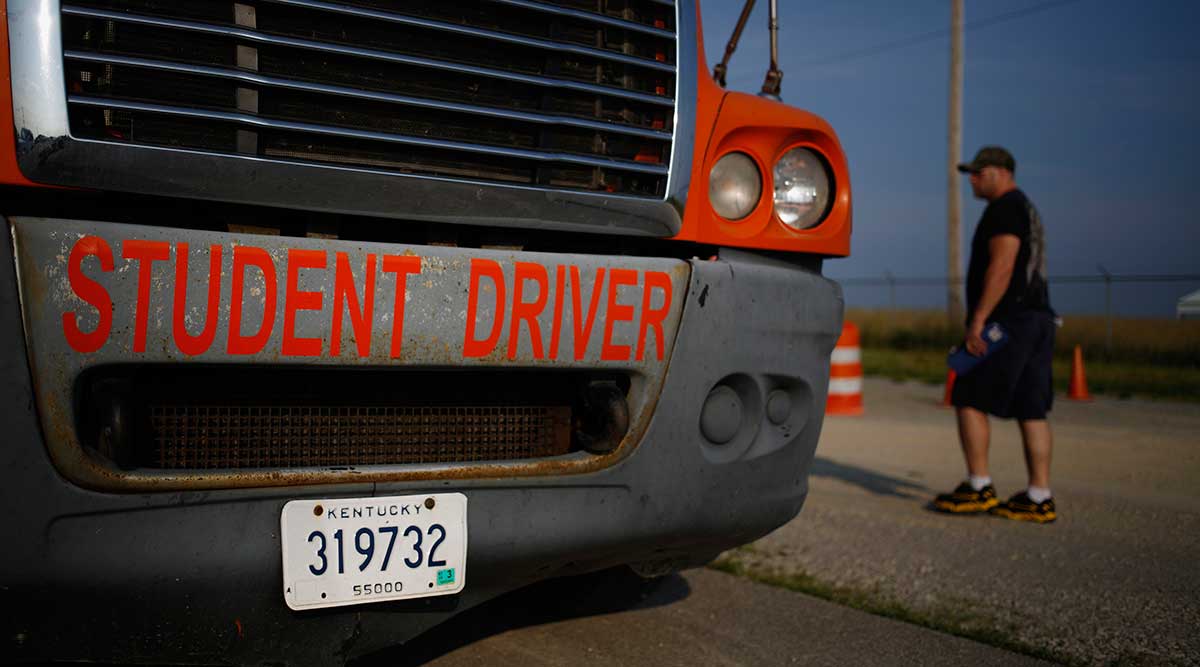Senior Reporter
FMCSA Announces Plans to Issue Proposed Entry-Level Driver Training Rule

The Federal Motor Carrier Safety Administration on March 4 made public its “negotiated” proposed entry-level driver training rule that would revise the standards required for new interstate and intrastate commercial vehicle operators to obtain a commercial driver license.
The proposal does not specify a minimum number of hours that driver-trainees must spend on classroom theory, but it would require that Class A CDL driver-trainees receive a minimum of 30 hours of behind-the-wheel training, with a minimum of 10 hours on a driving range.
The Class A driving instruction also must include either driving 10 of the total required hours on a public road or 10 public road trips — each being at least 50 minutes.
Class B CDL driver-trainees must receive a minimum of 15 hours of behind-the-wheel training, with a minimum of seven hours of public road driving.
The proposal said the entities providing training must meet minimum curriculum qualifications, be listed on FMCSA’s proposed training provider registry and submit electronically to FMCSA the training certificate for each individual who completes the training.
“FMCSA has been working toward a strong entry level driver training standard since 1991, and we are pleased that they have released this proposed rule that will raise standards and improve safety,” American Trucking Associations President Bill Graves said. “This rule does a good job of outlining the knowledge and skills a new driver should have before heading out on the road, but ATA is concerned that an arbitrary requirement centered on behind-the-wheel training hours distracts from a more important focus on performance and safety outcomes.”
Irrespective of the number of hours of behind-the-wheel training, the training provider must not issue a driver a training certificate unless the student demonstrates proficiency in operating a heavy truck or bus.
“The NPRM also proposes that a CDL holder who has been disqualified from operating a CMV must successfully complete refresher training,” the proposed rule said.
Military drivers, farmers and firefighters, generally excepted from the CDL requirements, would therefore be excepted from the proposed training rule.
“Well-trained drivers are safer drivers, which leads to greater safety for our families and friends on our highways and roads,” U.S. Transportation Secretary Anthony Foxx said.
The agency said the rulemaking would enhance the safety of commercial motor vehicle operations on the nation’s highways by establishing “a more extensive entry-level driver training protocol and by increasing the number of drivers who receive the training.”
FMCSA said the new training regimen would not take effect until three years after a final rule is published. The agency, which plans to publish the proposed rule in the Federal Register on March 7, said it would accept public comment for 30 days.
Attempts by trucking regulators to impose a prescribed course of training for novice drivers date to 1985, when the Federal Highway Administration’s Office of Motor Carriers, the predecessor to FMCSA, published a “Model Curriculum for Training Tractor-Trailer Drivers.”
Several attempts since then have been rejected either due to a lack of industry support or inadequate regulatory justifications that a rule’s benefits would outweigh its costs.
The new proposal, mandated by the MAP-21 transportation law, is the result of series of meetings between February 2015 and May 2015 of an FMCSA-appointed broad-based stakeholder group known as the Entry-Level Driver Training Advisory Committee. The 25-member committee issued its consensus agreement May 29, 2015.
FMCSA said it has followed the consensus agreement “to the maximum extent possible consistent with its legal obligations.”
“Training would lead to more efficient driving techniques, resulting in a reduction in fuel consumption and consequently lowering environmental impacts associated with carbon dioxide emissions,” the agency said.
It also would reduce the frequency and severity of crashes, and promote “more efficient driving that has been shown to reduce maintenance and repair costs,” FMCSA said.

